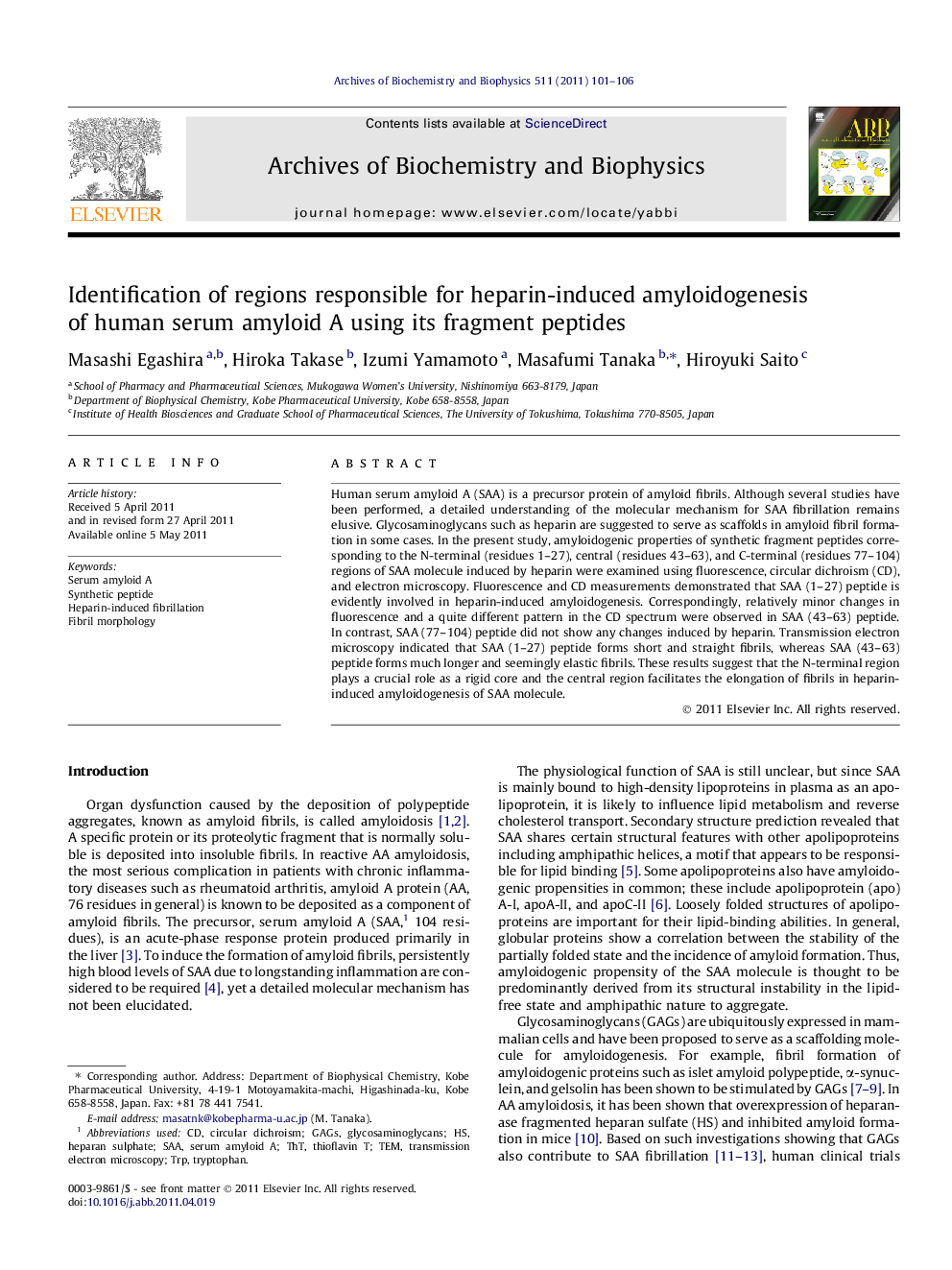| Article ID | Journal | Published Year | Pages | File Type |
|---|---|---|---|---|
| 1925706 | Archives of Biochemistry and Biophysics | 2011 | 6 Pages |
Human serum amyloid A (SAA) is a precursor protein of amyloid fibrils. Although several studies have been performed, a detailed understanding of the molecular mechanism for SAA fibrillation remains elusive. Glycosaminoglycans such as heparin are suggested to serve as scaffolds in amyloid fibril formation in some cases. In the present study, amyloidogenic properties of synthetic fragment peptides corresponding to the N-terminal (residues 1–27), central (residues 43–63), and C-terminal (residues 77–104) regions of SAA molecule induced by heparin were examined using fluorescence, circular dichroism (CD), and electron microscopy. Fluorescence and CD measurements demonstrated that SAA (1–27) peptide is evidently involved in heparin-induced amyloidogenesis. Correspondingly, relatively minor changes in fluorescence and a quite different pattern in the CD spectrum were observed in SAA (43–63) peptide. In contrast, SAA (77–104) peptide did not show any changes induced by heparin. Transmission electron microscopy indicated that SAA (1–27) peptide forms short and straight fibrils, whereas SAA (43–63) peptide forms much longer and seemingly elastic fibrils. These results suggest that the N-terminal region plays a crucial role as a rigid core and the central region facilitates the elongation of fibrils in heparin-induced amyloidogenesis of SAA molecule.
► SAA (1–27) peptide is evidently involved in heparin-induced amyloidogenesis. ► Minor and atypical spectral changes were observed in SAA (43–63) peptide. ► SAA (77–104) peptide did not show any changes induced by heparin. ► Fibril morphologies formed by SAA (1–27) and (43–63) peptides were different. ► Different regions in SAA molecule seem to play different roles in amyloidogenesis.
